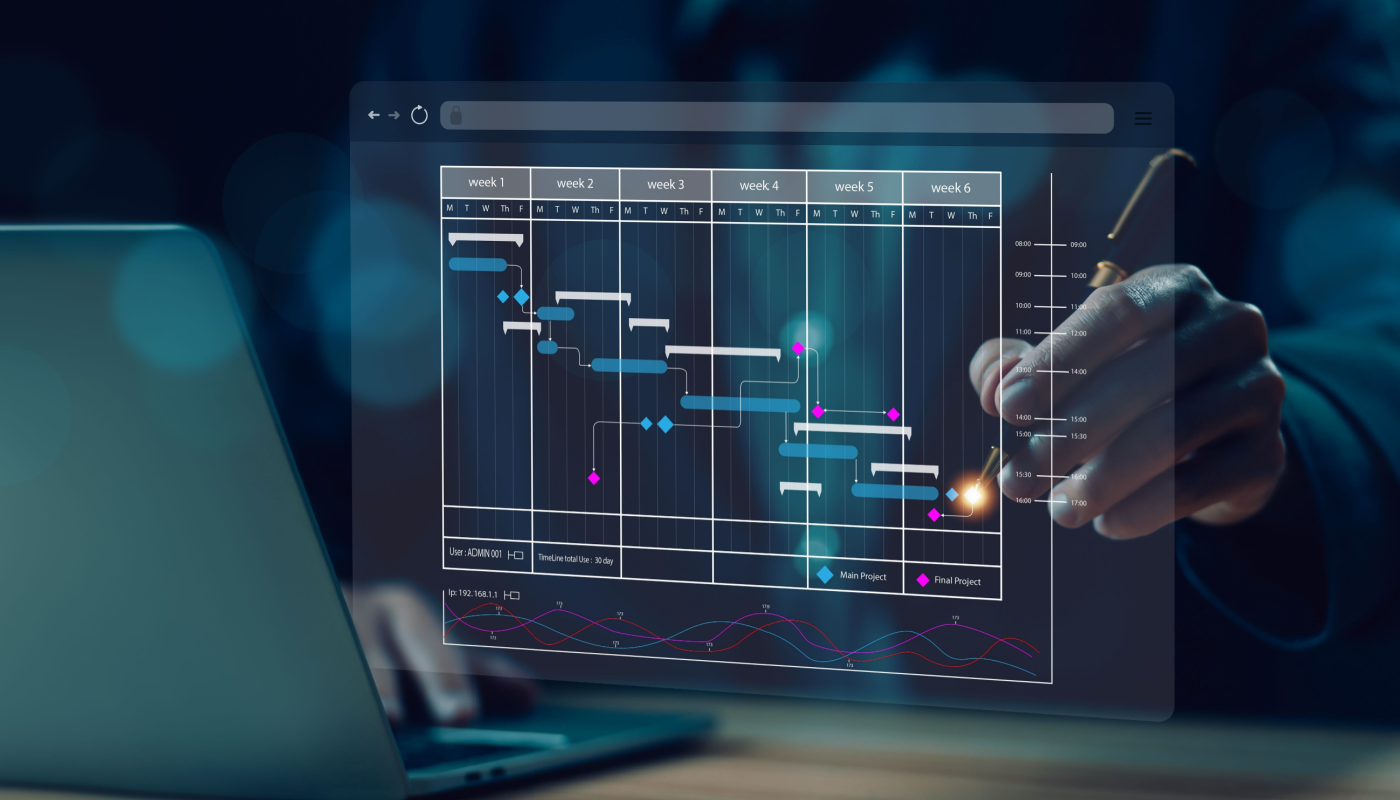In today’s highly globalized economy, no country can remain isolated or insulated from the outside world and supply chain risks. As we know, the world is so interconnected that one hiccup can cause a myriad of issues downstream. It’s a real-time example of the butterfly effect.
As a result, many US businesses are affected by international factors beyond their control:
- Geopolitical tensions
- Terrorist and hacking attacks
- Natural disasters
- Epidemics
- Volatility in fuel prices and foreign exchange rates
- Logistics
- International tariffs, trade agreements, and sanctions
These are apart from the regular trade risks such as a global market scenario and changing customer preferences, technological risks, supplier performance, and foreign competitors.
It boils down to this – how do you manage and mitigate risks to your supply chain in an uncertain and uncontrollable external environment? While there is no one-size-fits-all approach to this complex challenge, here are 10 key elements that will help you evaluate your existing supply chain and help in adjusting your supply chain strategies.
Diversification of Supplier Base
It’s important for your procurement team to revisit your medium- to long-term purchasing strategies. As we have seen with COVID-19, over-dependence on a single country or region for your raw material supplies presents a risky proposition and needs to be reconsidered. In such cases, purchasers need to be actively and strategically on the lookout for suppliers based in different countries and different geographical regions.
This can be a daunting task. First, concentrate on the major items being purchased in terms of value and volume – “A class” items. Once they have covered the items of vital importance, they can move on to “B class” and finally, if required, “C class” items.
Strategic Make-or-Buy Consideration
This is a complex step to do correctly and requires a strong cross-functional team to ensure success. However, once completed, the benefits of this exercise far outweigh the investments made in terms of resources and personnel. The steps involved include a careful review of your entire portfolio of inventory being handled – raw material, sub-assemblies, work-in-progress (WIP) and finished goods, and ask:
- What are your core competencies and value-adds that are being carried out in your manufacturing plant?
- Are there strategic raw materials that can be manufactured in-house or within your country rather than imported?
- Are there less value-added, or non-core competency sub-assemblies or finished goods that can be outsourced to other companies or regions?
- What geopolitical challenges exist in the countries you import from? Is there a threat of revolution, invasion, taxes/tariffs, or other political upheavals?
Landing Price Perspective for Imports
It’s always beneficial to regularly review and analyze the landed price of goods in a structured manner. The landing price of imported goods includes actual unit purchasing price, local tariffs, international logistics costs, carrying and forwarding, and administrative costs.
While some components of the landing price are beyond control, a combination of the actual unit purchasing price and international logistics costs is where the hidden gold lies. Can the raw material be procured from a nearby country or from a country with more favorable logistics costs? Can the raw material planning be done in advance to increase the logistics mode options? While all these opportunities are being considered, always keep an eye on your objective of “diversification of the supplier base.”
The Power of Kaizen – Continuous Improvement
Never underestimate the power of small, incremental positive changes in your business processes and working environment. While major breakthroughs and inventions come occasionally, it’s the power of Kaizen that yields great results consistently and sustainably. For the right-sized company, it’s a great idea to launch a formal Kaizen program. Train and guide your employees to document and quantify their Kaizen initiatives. Recognizing and rewarding the high-impact Kaizen projects are an additional way to keep your employees engaged and motivated.
Value Engineering
Value engineering is a function-oriented, systematic team approach and study of the “value” of products and services from the end-user perspective. The goal is to influence the value to the customer by either improving function or reducing cost. Done right, value engineering can provide a competitive edge.
The secret to success lies in identifying cheaper substitutes and alternatives that have equal or better performance. Formal workshops involving cross-functional teams primarily from design, manufacturing, engineering, and marketing can be very effective for such cost reduction initiatives.
Standardize (Almost) Everything
A very simple, yet often overlooked, technique for cost reduction is standardization. Standardization is primarily used for reduction in a variety of raw material components and spares. Lesser variety means less complexity, more purchasing power, lesser storage space requirements, reduction in lead times, lower risk of obsolescence and reduction in working capital requirements. A cross-functional team involving retail, purchasing, maintenance, design, and manufacturing members can effectively lead your company’s standardization exercise.
Also, review the total number of active SKUs of raw material and finished goods of your business. The larger the number of SKUs represents more complexity, more working capital requirements and compromise on economies of scale. Can the additional findings of your standardization exercise be used to further reduce the SKUs? Based on the inputs from your field sales & marketing teams, are certain active finished goods SKUs potential candidates for discontinuation?
Finally, data standardization is often as important as product or process standardization.
- Is there a common taxonomy for product coding?
- How easy is it to accommodate new suppliers and product configurations?
- How much data enhancement and manual intervention is required to run necessary reports?
- How often are manual overrides necessary to manage the day-to-day of your business?
Getting the data right is almost equal to adding staff to many organizations. Do not short-shift this activity.
Market Expansion – Where Possible
Is your business selling only to a limited region or a few countries? Is your business serving a limited customer base? What changes in your existing products or new product offerings need to be considered for expanding your sales outreach? Remember, don’t keep all your eggs in one basket, but rather diversify – this strategy is one of the best hedgings against international business risks. But be aware, new sales regions can be capital intensive and might require the set-up of a totally new distribution network and marketing strategy.
Explore Flexible Manufacturing
Flexible manufacturing systems are best suited for medium variety and medium production volume items. A flexible system provides unmatched advantages like increased capacity utilization, reduction in works-in-progress and finished goods inventory levels, lower production lead time, lesser changeover time and higher productivity. Even though a flexible system is initially capital intensive, it can provide a definitive competitive.
Unlock the Hidden Potential
Pay attention to your slow- and non-moving inventories. Hidden underneath these inventories are the potential for cash and space generation and a much-needed decluttering exercise for your business. Regular review and action on inventory age reports are required. Slow-moving and non-moving finished goods can be liquidated through discounts and flash sales. These inventories might require re-packaging or re-furbishing and a specific advertisement and liquidation channel, but the results are rewarding.
Want to nip intermittent demand in the bud? Read the blog, “How to Measure Forecast Errors in Intermittent Demand Forecasting”
Build a Flexible & Dynamic Supply Chain Team
Employees are the greatest assets of any organization and it’s always great to have a flexible and dynamic supply chain team. Seamless communication and reporting tools along with easy access to technological resources result in high-quality, quick decisions. Such an agile team can swiftly respond to business urgencies and quickly tap on potential opportunities. Hence, focus on individual employee development and plan for cross-functional exposure. Small cross-functional groups, working on specific supply chain improvement projects, provide great results through empowerment.
Sometimes a 3rd party can help you decide where to make investments with the greatest impact. Arkieva can help. Contact us to speak to a member of our consulting team for an individualized conversation about your goals and the roadblocks you face.








